We have a new art museum — almost.
The Bellarmine Museum of Art opens to the public on Oct. 25 on the grounds of Fairfield University in Fairfield, Ct.
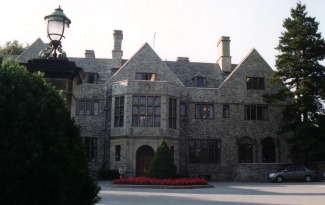 Now Connecticut is hardly art-poor, and given its proximity to the riches of museums in New York, Boston and the Berkshires, I can think of places in America that could use a new art museum more than Fairfield. The town, home to General Electric and situated on Connecticut’s Gold Coast, is just 20 miles from Greenwich, home of the Bruce Museum, and about 50 miles from New York City.
Now Connecticut is hardly art-poor, and given its proximity to the riches of museums in New York, Boston and the Berkshires, I can think of places in America that could use a new art museum more than Fairfield. The town, home to General Electric and situated on Connecticut’s Gold Coast, is just 20 miles from Greenwich, home of the Bruce Museum, and about 50 miles from New York City.
But, we’ll take new art venues where we can, as long as they are suffiently funded.
The Bellarmine is making its home in galleries lining the basement of the mansion that serves as the university’s administration building, which is not as bad as it sounds. They were completely remodeled to accommodate 20 objects of Celtic, Byzantine, Romanesque and Medieval periods on loan from the Metropolitan Museum’s Cloisters, ten Italian Renaissance and Baroque paintings gifted by the Kress Foundation (originally to what is now the Discovery Museum in Bridgeport), a collection of Asian art, and a plaster cast collection, many from the Met.
The initial exhibition schedule, two shows drawn from the Met loans and a contemporary show of work by Norman Gorbaty, can be seen here. The museum has other ambitious plans, outlined here, and is eager to pursue collaborations.
Earlier this month, the Danbury Times published an article on the opening, to which I am giving the last word. It quotes museum director Jill Deupi saying the museum fulfills the university’s mission of “educating the whole person — body, mind and soul.”

 Bad headline: the humanities have been in something of a crisis for years, and to use, as Fish did, an act by the president of SUNY-Albany — the axing of programs there in French, Italian, classics, Russian and theater — is rather like saying that newspapers are in trouble because of a closure in Reading, Pa.
Bad headline: the humanities have been in something of a crisis for years, and to use, as Fish did, an act by the president of SUNY-Albany — the axing of programs there in French, Italian, classics, Russian and theater — is rather like saying that newspapers are in trouble because of a closure in Reading, Pa. 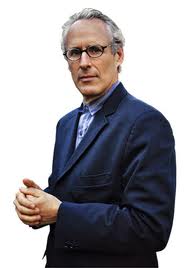 Last Friday, I went out to the
Last Friday, I went out to the 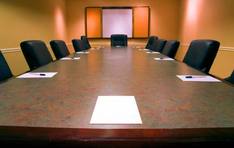 Ross is correct: some board turnover can be good, especially if they are acknowledging that they can not meet the financial commitment they made when they joined the board.
Ross is correct: some board turnover can be good, especially if they are acknowledging that they can not meet the financial commitment they made when they joined the board. 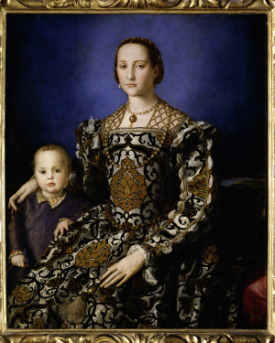 According to the Palazzo, this is the first monogaphic exhibition ever devoted to the paintings of Agnolo di Cosimo, known as Bronzino, though he was born in 1503 and died in 1572 — kind of like Jan Gossart, who’s getting his first solo show in the U.S. at the Met right now (and btw it’s gorgeous. Congratulations to curator Maryan Ainsworth). Gossart, though, had an exhibition of his own in Europe 45 years ago.
According to the Palazzo, this is the first monogaphic exhibition ever devoted to the paintings of Agnolo di Cosimo, known as Bronzino, though he was born in 1503 and died in 1572 — kind of like Jan Gossart, who’s getting his first solo show in the U.S. at the Met right now (and btw it’s gorgeous. Congratulations to curator Maryan Ainsworth). Gossart, though, had an exhibition of his own in Europe 45 years ago. 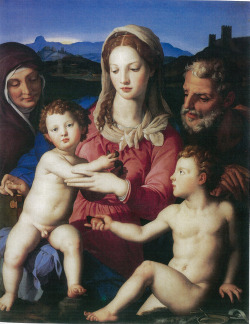 All told, the exhibit boasts 63 paintings by Bronzino, 10 by him and his workshop, plus others by Pontormo, his teacher, and sculptures by his contemporaries, like Cellini.
All told, the exhibit boasts 63 paintings by Bronzino, 10 by him and his workshop, plus others by Pontormo, his teacher, and sculptures by his contemporaries, like Cellini. 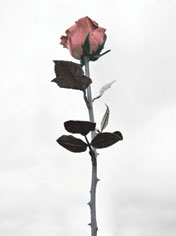 The New Museum started this tribute, which will document the artists who have called the Bowery neighborhood home, soon after it opened its new home there in late 2007. Along with a full-sized magazine of articles and interviews with Bowery artists (Vol. 2 includes Roddy Bogawa, John Giorno, Mary Heilmann, Kellie Jones, Adam Purple, Arleen Schloss, Billy Sullivan and Dash Snow [no interview]), plus a long list of artists and their past or current address, the Tribute has its own
The New Museum started this tribute, which will document the artists who have called the Bowery neighborhood home, soon after it opened its new home there in late 2007. Along with a full-sized magazine of articles and interviews with Bowery artists (Vol. 2 includes Roddy Bogawa, John Giorno, Mary Heilmann, Kellie Jones, Adam Purple, Arleen Schloss, Billy Sullivan and Dash Snow [no interview]), plus a long list of artists and their past or current address, the Tribute has its own 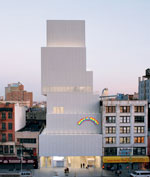 And in case you missed it, last week the New Museum announced the “Festival of Ideas for a New City,” set for May 7-8, 2011, which will panels, roundtables, symposia, and workshops; an outdoor street fair; and dozens of projects, performances, and events, opening simultaneously at multiple downtown venues. The Bowery is the spine of the event, anchored by Cooper Union on the north and the New Museum on the south. More information is
And in case you missed it, last week the New Museum announced the “Festival of Ideas for a New City,” set for May 7-8, 2011, which will panels, roundtables, symposia, and workshops; an outdoor street fair; and dozens of projects, performances, and events, opening simultaneously at multiple downtown venues. The Bowery is the spine of the event, anchored by Cooper Union on the north and the New Museum on the south. More information is